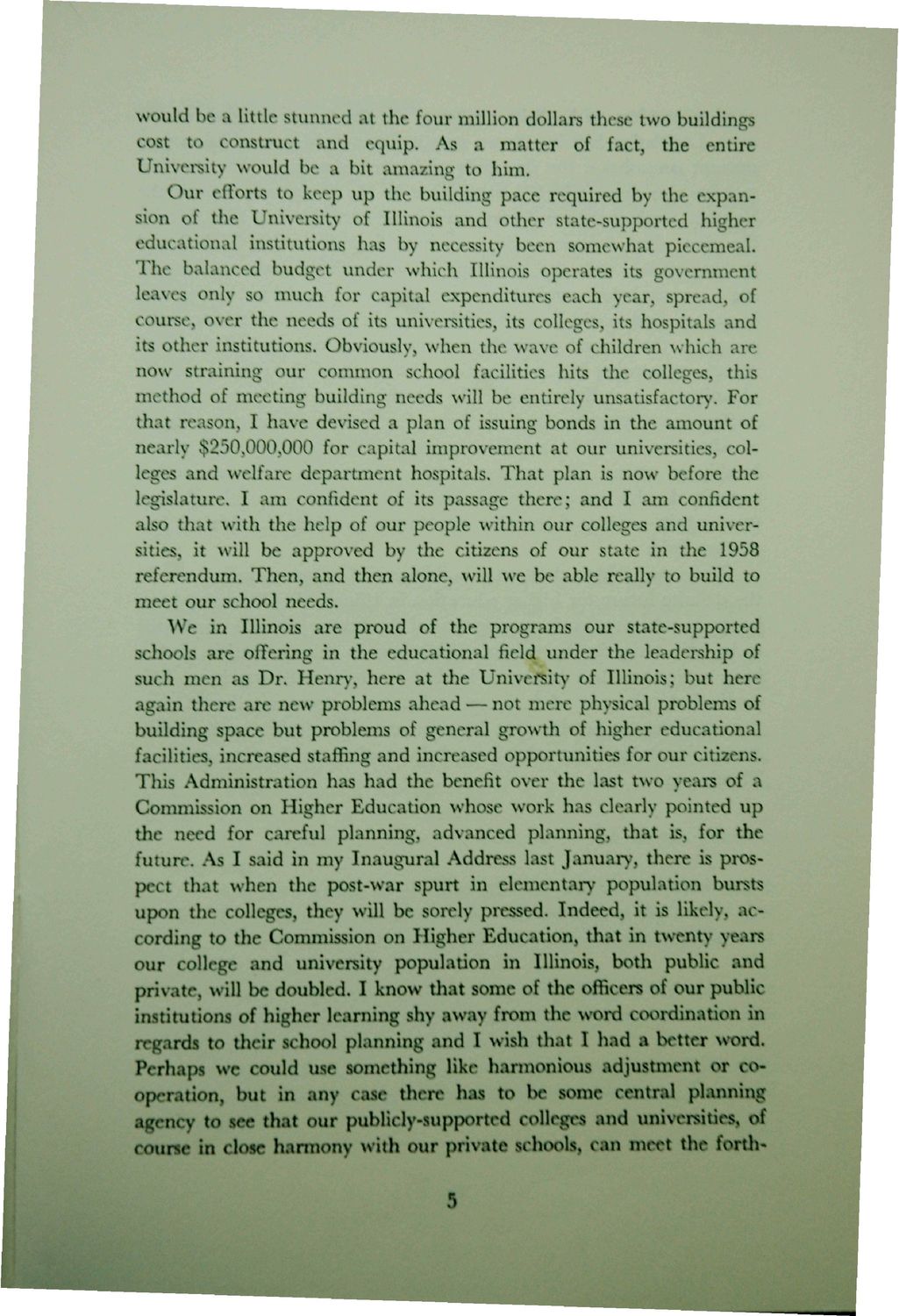| |
| |
Caption: Dedication - Home Economics - Challenge of Home Economics
This is a reduced-resolution page image for fast online browsing.

EXTRACTED TEXT FROM PAGE:
would be a little stunned at the four million dollars these two buildings cost to construct and equip. As a matter of fact, the entire University would be a bit amazing to him. Our efforts to keep up the building pace required by the expansion of the University of Illinois and other state-supported higher educational institutions has by necessity been somewhat piecemeal. The balanced budget under which Illinois operates its government leaves only so much for capital expenditures each year, spread, of course, over the needs of its universities, its colleges, its hospitals and its other institutions. Obviously, when the wave of children which are now straining our common school facilities hits the colleges, this method of meeting building needs will be entirely unsatisfactory. For that reason, I have devised a plan of issuing bonds in the amount of nearly $250,000,000 for capital improvement at our universities, colleges and welfare department hospitals. That plan is now before the legislature. I am confident of its passage there; and I am confident also that with the help of our people within our colleges and universities, it will be approved by the citizens of our state in the 1958 referendum. Then, and then alone, will we be able really to build to meet our school needs. We in Illinois are proud of the programs our state-supported schools are offering in the educational field under the leadership of such men as Dr. Henry, here at the University of Illinois; but here again there are new problems ahead — not mere physical problems of building space but problems of general growth of higher educational facilities, increased staffing and increased opportunities for our citizens* This Administration has had the benefit over the last two years of a Commission on Higher Education whose work has clearly pointed up the need for careful planning, advanced planning, that is, for the future. As I said in my Inaugural Address last January, there is prospect that when the post-war spurt in elementary population bursts upon the colleges, they will be sorely pressed. Indeed, it is likely, according to the Commission on Higher Education, that in twenty years our college and university population in Illinois, both public and private, will be doubled. I know that some of the officers of our public institutions of higher learning shy away from the word coordination in regards to their school planning and I wish that I had a better word. Perhaps we could use something like harmonious adjustment or cooperation, but in any case there has to be some central planning agency to see that our publicly-supported colleges and universities, of course in close harmony with our private schools, can meet the forth* 5
| |